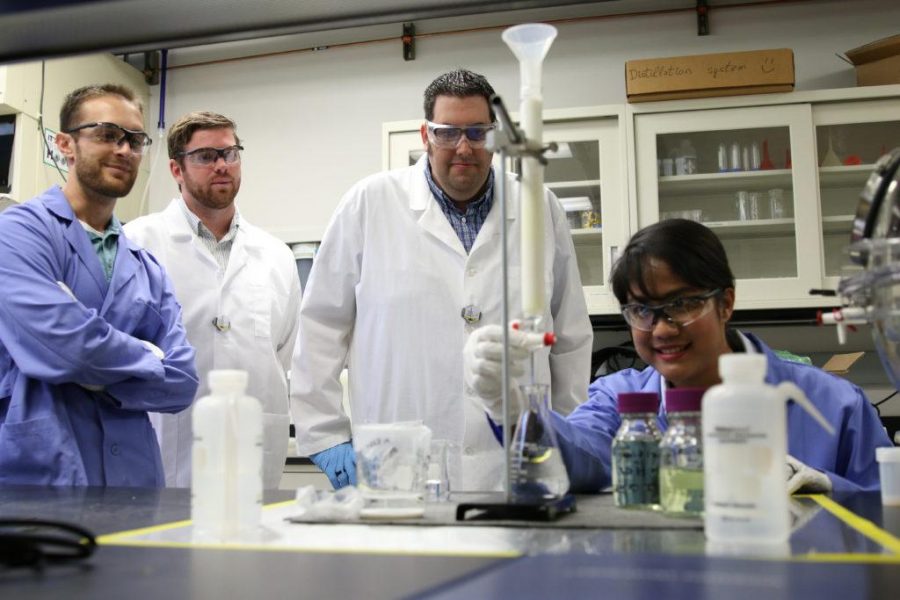Although the Nuclear Engineering Program at the U is currently small, a lot of growth is expected in the future. Right now, students can earn a minor, non-thesis master’s or graduate degree in nuclear engineering from a faculty of two professors.
The department is now pulling in millions of dollars in research money, meaning they will be able to hire a greater number of students and fund more research projects. Funding comes from a variety of programs, including the Domestic Nuclear Detection Office and Defense Threat Reduction Agency, a subset of the Department of Defense.
“The nuclear forensics that we’re doing here at the University of Utah, while it’s very much on the fundamental research side, it is what will be used in national security in the next decade,” said Luther McDonald, Assistant Professor of Nuclear Engineering and Assistant Director of the Nuclear Engineering Program.
Research here focuses on the basics, which will later on be applied to a bigger picture. The main goal of this research is to shorten the time it takes to examine nuclear material and to determine where it came from. Traditional methods may take months to analyze a material using radiochemical separation, while this new technique examines the morphology of uranium compounds using high-resolution pictures from electron microscopes.
Looking at the morphology helps scientists determine not only how the compound was made, but also its origin. This will be useful in finding the location of nuclear weapons because researchers will have the ability to trace nuclear samples back to their origin and determine whether it is intended to produce power or weaponry.
While past research studied the morphology of uranium oxide, current research is applying machine learning to this process. Creating an algorithm to carry out analysis of materials speeds up the process, eliminating human error and bias.
Another study is examining the possibility of using the ratio of oxygen isotopes in samples to determine the latitude, longitude, and altitude samples started at. This could potentially help trace not only the origin of nuclear samples, but also the paths they have traveled.
This summer, the University of Utah will host the Nuclear Forensics Undergraduate Summer School for the first time. This intensive six-week program will offer a chance for 12 students across the nation to participate in both lecture-style and hand-on learning the nuclear forensics laboratory.
The Department of Homeland Security and Los Alamos National Laboratory select students to participate in the summer school and provide funding to the hosting university.
Hosting the summer program marks a significant step forward for the U’s Nuclear Engineering Program. In the past, the summer school has been hosted by a monopoly of only three universities: Washington State University, the University of Missouri, and the University of Nevada, Las Vegas.
“We want to show off how beautiful our campus is and just how fun our research is,” said Dr. McDonald.
While the students are here, they will be taught traditional research methods, but also introduced to cutting-edge developments in nuclear forensics and engineering.
@KarissaWang


